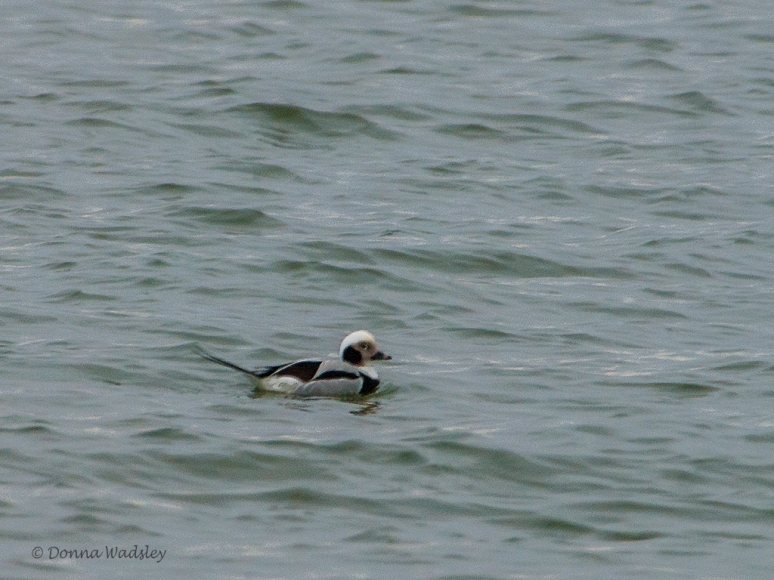Long-Tailed Ducks
One of the more exciting winter ducks to visit off and on this winter along Cambridge Creek has been a lone juvenile male Long-tailed Duck.
I’ve only once seen and photographed this duck in flight, so this winter’s chance of opportunity to get so many wonderful captures of this species was a thrill to say the least. I’ll try to ‘hold back’ on the number of photos!
Long-tailed Duck (male)
Long-tailed Duck (male)
Only the males have the long-tail plume. I watched him several times and finally caught our visitor flipping his ‘tail’. They do this as part of a courtship display. There are no females around, so maybe this young fella was practicing for his return in the Spring to find a mate. 🙂
Long-tailed Duck (male) flipping his ‘tail’
The Long-tailed Duck breeds in the Arctic and winters along both coasts of North America, usually in large flocks that raft often far out at sea. They also winter in the Bering Sea, Hudson Bay, and Great Lakes.
This duck is one of the deepest diving sea ducks, diving as deep as 200 feet (60 meters) to forage for mollusks, crustaceans, and a few small fish.
Formerly known as the Oldsquaw duck, it was renamed in 2000 as the Long-tailed Duck because of it’s name’s sensitivity.
We took a trip down to Hoopers Island to dine at Old Salty’s Restaurant (BEST crab cakes in the area!) a few weeks ago; afterwards as always, we road to the end of the islands where it meets the Chesapeake Bay. (I highly recommend a road trip down to Hoopers Island.) I sighted both a male and a female Long-tailed Duck out in the open waters of the Bay. I could not believe it!
Adult Long-tailed Duck (male) shot at a long distance on the Chesapeake Bay
Long-tailed Duck (female) on the Chesapeake Bay
Long-tailed Duck (male) on Cambridge Creek
How lucky our community is to have this young male Long-tailed Duck hanging around Cambridge Creek this winter for our enjoyment!
























